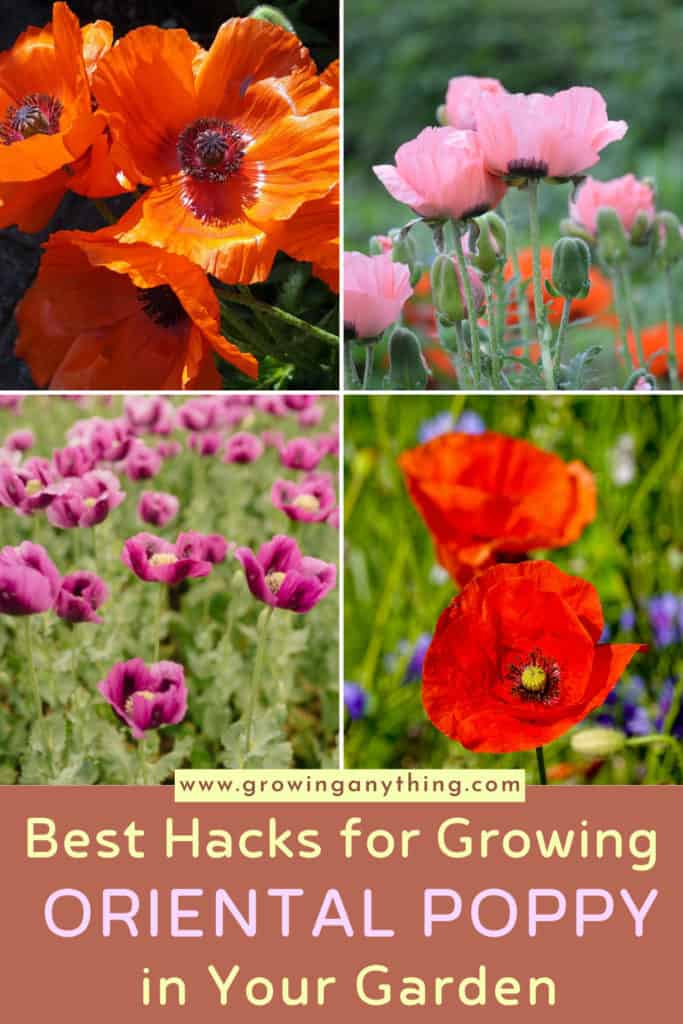Oriental Poppy
Rarely do I get so many compliments and inquiries about plants in my garden as I receive about beautiful Oriental poppy. Today, I will be sharing all tips and explaining more about how to grow and care for Oriental poppy.
Oriental poppy is a perennial that provides the wow effect during the bloom season. It blooms in different colors and needs slight gardening skills to dazzle everyone with its colorful appearance.
Image: Oriental poppies are easily recognizable by their large and bright flowers that look excellent in a green setting.
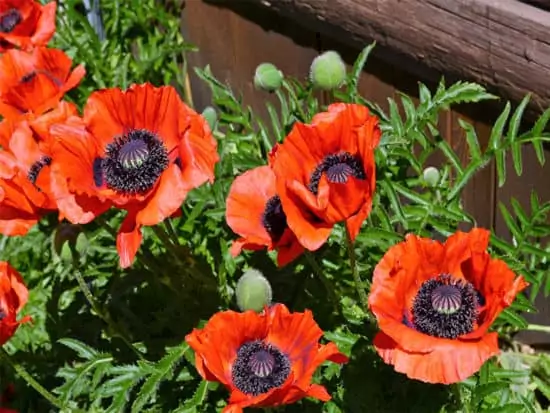
Oriental Poppy Basic Information
Oriental poppy got its name by its origin. It is a native flower in northern Turkey and Iran. The plant belongs to the Papaveraceae family and goes under the genus name Papaver. But, we all know it and love it by its common name.
The plant blooms mid-summer and is relatively easy to grow because it is quite resilient to different conditions.
Oriental Poppy Appearance
The most oriental poppies are orange or with a black center. The petals are bright and large and look like crepe paper. Still, the flowers aren’t the only stunning thing on poppies. In spring, the Oriental poppy develops beautiful, bright green foliage in the spring.
There are numerous cultivars of Orange poppies, with unusual but bright colors. Moreover, because the poppy has dense foliage and stiff stems, it is a great flower for cuts and bouquets.
Oriental Poppy Cultivars
Whichever Oriental poppy you choose, it will ensure a colorful landscape display. Let’s check the eight most common types that will fit in every garden.
Beauty of Livermere
This cultivar can grow up to 1m in height, so it is the tallest of all Oriental poppy species. It features stunning scarlet red petals with a black center.
Turkenlouis
Turkenlois cultivar also has scarlet red flowers, but they have a slightly different shape. The bowl-shaped flowers have fringed petals. The Turkenlois can reach 80 cm max, but it usually grows smaller.
Patty’s Plum
Similar to the previous cultivar, Patty’s Plum reaches 80 cm in height. It has hairy, dusty green, grey stems and gentle, pastel petals in the shade of light plum or dusky grey. The distinct flower colors look stunning around other pastel flowers.
Image: Patty Plum is one of the most charming cultivars of Oriental poppies.
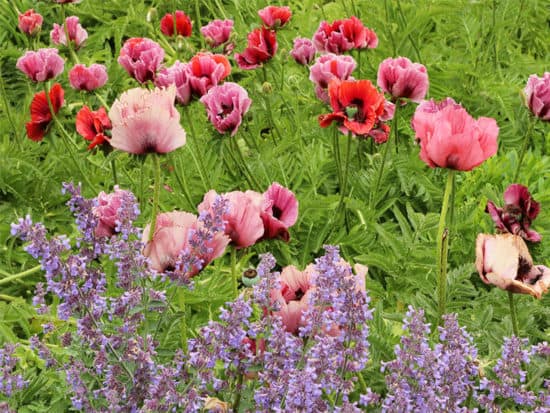
Garden Glory
Garden Glory is a variety of Patty’s Plum, but it has large, salmon-pink petals. Double-ruffled petals won’t drop, as they do in some other cultivars. The plant reaches 75 cm in height.
Maiden’s Blush
If you want something gentle and more on the pink side, you can pick Maiden’s Blush type, with its salmon-pink soft flowers. The maximum height of this one is 60 cm.
Wisley Beacon
It has large, cup-shaped, bright orange flowers with a dark center. The plant grows up to 60 cm.
Manhattan
Cultivar Manhattan features the most beautiful and the brightest pink flowers on hard stems. The plant can be 80 cm tall.
Avebury Crimson
Here is another variety of original colors of Oriental poppy flowers. This one has bright scarlet flowers with a papery effect growing on 75-cm tall stems.
Planting Oriental Poppies
As I mentioned before, Oriental poppies are quite self-contained once planted, so they don’t require a lot of maintenance.
There are three ways how you can plant them in your garden. But, let’s start with the proper location and time of the year for planting the Oriental poppies!
How to Choose the Ideal Location for Oriental Poppies?
Oriental poppies require the most attention when planting them. Afterward, things get pretty simple. Generally, once you plant the Oriental poppies, you shouldn’t move them, as the plant may die.
Also, find a place that isn’t soggy, and you can conduct a test to learn more about the soil pH.
These plants love neutral soil but can tolerate somewhat acid pH. If the soil isn’t well-drained the root may rot as soon as you plant it.
If the soil is too acidic, you amend the soil with lime to neutralize the acid.
Also, taller cultivars, such as Beauty of Livermere, can flop over as their cycle goes further. It can be useful to plant the Oriental poppy around bushier species. That way, the plant will have something to lean on and stay upright even after the blooming season.
When to Plant the Oriental Poppies?
Oriental poppies have a distinct life cycle. They grow the best in autumn when the temperatures start to get cooler. New shots start to emerge, and the leaves form a mound. Then, as the winter comes, the growth stops, but the leaves mound will stay green. In spring, the plant continues to grow, and the plant blooms until mid-summer when the heat kills the flower and leaves. And their life cycle starts again in the autumn.
So, spring and fall are the best time to plant your Oriental poppies. But, if your winters are harsh, you should better plant them in the spring. On the other hand, if the winters are warm and mild, your Oriental poppy will grow the best from autumn.
How to Plant Oriental Poppies from the Seeds?
Start in the spring or early fall, if you live in the warm climate. Find the location that gets at least six hours of light per day and toss the surface top two inches of soil. Scatter the seeds on the soil directly, but never cover the seeds. That way, the seeds can get enough light they need for germination. Further, water the area regularly, but sparsely.
Give them a couple of weeks to grow, and you will notice thin seedlings spreading on the surface. Make sure there are approximately 6 inches between each seedling to give them enough space to grow. Your fresh new Oriental poppies planted from the seed won’t bloom for an entire year when you first plant them. But, once the first flower appears you will know that it was worth waiting for!
How to Plant Pot-Grown Oriental Poppy?
It is probably the easiest method of planting Oriental poppies, but these plants are challenging to find in the pot due to complex transplantation. If you find the nursery with a beautiful Oriental poppy in the pot, all you have to do is dig the hole in the soil, around the same depth as the pot the plant came in.
Next, gently put the plant in the hole and secure it with the soil. However, be as gentle as you can to avoid damaging the roots.
How to Plant Oriental Poppy from Bare-Root Plant?
Some gardeners prefer this method. You have to lift bare-root plants, hold the tap root top, and put it around 1 to 3 inches in the soil. Usually, the plant comes with specific directions, so you should follow them, but the primary procedure is the same.
How to Care for Oriental Poppy?
Oriental poppies are among perennials with the simplest maintenance. These plants need fertilizer once a year to ensure a healthy life cycle. You can use a slow-release fertilizer, and ensure the best effects if you use it in spring. Additionally, you can side-dress the plants with compost or self-made manure tea.
Moreover, if the winters are too harsh in your climate, I would recommend mulching in the first couple of years to keep the root safe.
The plant needs sun exposure, but not to speed up the blooming season, but to prevent mildew. It also doesn’t love too much watering.
Around one inch of water will be enough to keep your Oriental poppies healthy but not make the soil soggy.
Image: Don’t water the plants when they go dormant during the winter to keep their stunning look for the next year!
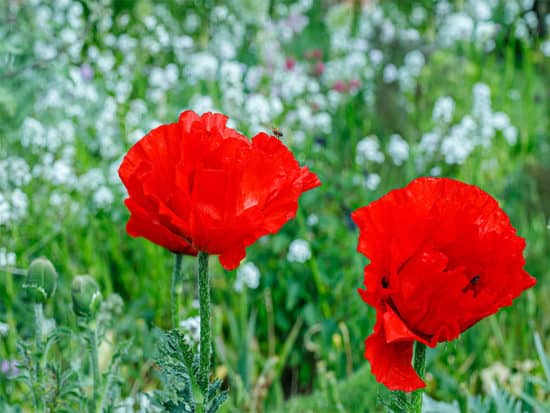
Cutting the Oriental Poppies
These plants are ephemeral, which means they have a short cycle. Therefore, when the summer reaches its maximum temperatures the flowers will slowly fade, and the plant will eventually go dormant.
Once the flower fades completely, you can cut back the leaves. Still, you can leave the stems long to enjoy seed pods.
During the fall, the plant will start to develop foliage again, and you can cut dead stems only. Once you do that, apply the mulch if the winter is harsh and cold in your area.
The plant will grow stronger in the cycle and award you again with stunning flowers in the next blooming season.
How to Propagate Oriental Poppies?
The easiest way to propagate Oriental poppies is through division.
If you have a garden area crowded with Oriental poppies, you can propagate them once in five years.
The ideal time to propagate Oriental poppies is when the plants go dormant, usually in the late summer. But, the taproot makes propagation a bit challenging.
You will first have to dig the soil deeply and ensure that you can reach the entire clump of the root. Be gentle when lifting thin, delicate roots. Prepare the sharp knife and go through the roots, ensuring that every division gets taproot, stem, and one eye.
To prevent the roots from dying, re-plant your divided Oriental poppies as soon as divide them.
Besides, placing them around three inches below the topsoil surface will ensure the best growing conditions.
Oriental Poppies Pests, Diseases, and Tips on How to Deal with Them
Oriental poppies are strong and healthy plants, but they can still suffer occasional insect attacks or fungal issues. Let’s take closer look at the most common problems with Oriental poppies.
Poor Soil Drainage
If your plant dies or rots, you have to check the soil drainage. Usually, the soil gets waterlogged in the winter. The easiest way to improve the drainage is to set the growing bet higher than the surrounding area. Additionally, add organic matter such as peat moss, leaf mold, or sand.
Aphids
Aphids are the most common aphids that can attack your Oriental poppies. The insects are small, around the size of the pinhead, green, pink, or brown. Sometimes, the insects gather in groups and attack the leaves and stems. Usually, these insects attack newer and younger stems so you need to be especially careful after planting them. The new plant will stop growing and the leaves will go yellow, even brown. Besides, the leaves can wilt, especially if they are exposed to the sun.
Generally, aphids don’t attack the oriental poppies too severely, and you can deal with them by spraying the insecticidal soap. For best results, spray the product on every three to five days.
If the insecticidal spray doesn’t solve the issue, you can apply the pyrethrum once a week for two weeks. Severe aphids’ attacks allow you to apply the pyrethrum even more frequently.
Leafhoppers
Leafhoppers are other insects that can attack the Oriental poppies. They are bright-colored and easy to spot, 1/4 inches long in the shape of a wedge.
They suck the juices from the Oriental poppies foliage, leaving them yellow-spotted. Eventually, the leaves drop off, and the insects sometimes leave their honeydew. These leaves can appear glazed which can enhance mold growth.
If your garden is, like mine, prone to these insects, you can apply insecticidal soap to prevent them, especially during the first month of the life cycle. Still, if the insects attack your plants you can use insecticidal soap with isopropyl alcohol to eliminate the Leafhoppers.
Nematodes
Nematodes are un-segmented roundworms that attack the plant root. The Oriental poppy will start looking sickly, stunted, and might have brown leaves. Eventually, the plant will die.
The only way to deal with these rootworms is to apply compost or leaf mold. It will induce the development of beneficial fungi.
You can also apply the fish emulsion and water mixture on the soil to reject the worms.
Tarnished Plant Bug
Tarnished plant bugs affect the growth of the flowers, deforming them or making them significantly smaller. The bug is 1/4-inch long and has yellow, brown, and black markings.
The bug is especially active during early spring and you can use isopropyl alcohol and pyrethrum mixture to spray the plant every three days in the morning.
If that fails, you can dust the surface of the plant with sabadilla.
Bacterial Blight
If you notice water-soaked areas on the foliage, the chances are that it is the bacterial blight. Remove infected plants and use a sulfur spray or any other fungicide to prevent the bacterial blight from happening again.
Dog
If you have a dog pet, don’t worry, it won’t eat the Oriental poppy. But, its urine may kill the leaves, or make them change the color. If you cannot train your dog from staying away from the plant, spritz the plants with aerosol pet repellent.
How to Use Oriental Poppies in Your Garden?
Oriental poppies are an attractive and effective way to add colors and structure to your garden. However, because they have a short life cycle, you can plant them around perennials that bloom in the summer. That way, their flowers will hide the dying Oriental poppy and keep the charming look of your garden.
Those can be a Siberian iris, rudbeckia, baby’s breath, or a lovely Russian sage and daylilies.
Middle of the flowers line or borders is excellent for Oriental poppies location.
Additionally, if you plant tall Oriental poppies, you can put them between some other flowers such as Goldenrod, Aster, Tall Garden Phlox, Bearded Iris, etc. However, keep them 18 inches apart from their companion.
Image: Pastel varieties of Oriental poppies slowly become the central place of every garden!
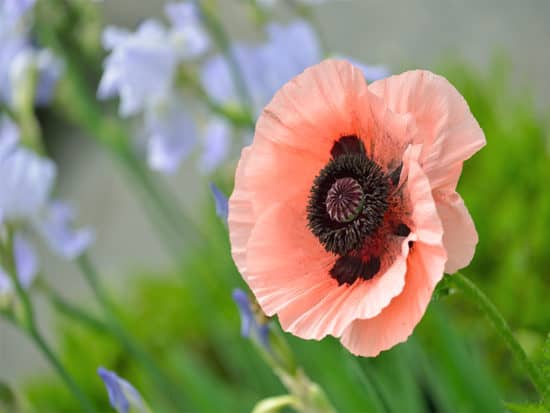
Can you Grow Oriental Poppies In Containers?
Yes, you can, and the process isn’t as complex as you would think. It is practically the same as outdoor, with a few simple changes. You need to pick the correct-size pot, get the appropriate soil and find the optimal watering frequency.
Oriental poppies grow well in containers, but you need to ensure that containers haven’t been used before, and free of toxins. Drainage holes are a must because the plant doesn’t love soggy soil, and the sunny location will help the plant grow and bloom to its full potential.
The planting process from the seed is the same in the garden.
Are Oriental Poppies Poisonous?
Yes, all parts of the plant, except the seeds, are poisonous if ingested. Therefore, the plant is deer and other animal-resistant.
After ingestion, a person can experience depression, severe sedation, or go into a coma and die.
Additionally, don’t mix the Oriental poppies seed with Opium poppies seed, commonly used in baked goods.
Besides, if your pets, dog, and cats eat any plant part, it can harm their health. If you suspect your dog ate the plant, take it to the wet immediately.
When the cat eats the Oriental poppy, the symptoms include dilated pupils, lack of appetite, moving difficulties, and coma.
Conclusion
Each cultivar of Oriental poppy is elegant and requires simple maintenance, but I stick to the red ones. I like how grateful the plant is when you ensure well-draining soil. Each year, the flowers are more beautiful and attractive, and the plant is stronger.
How do you like the Oriental poppies? Where would you plant them, and which colors look the best in your garden?
